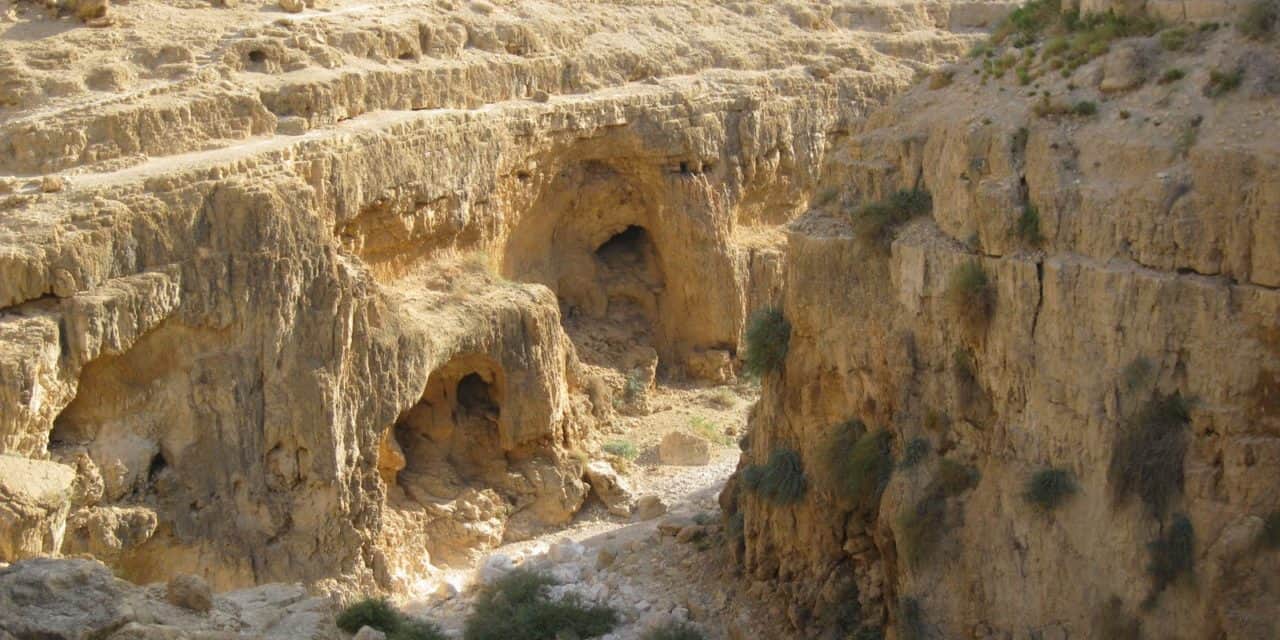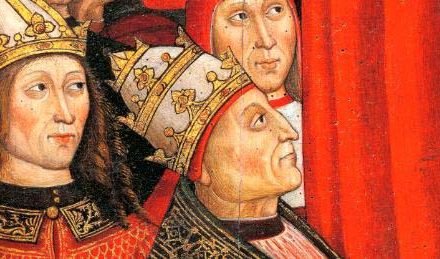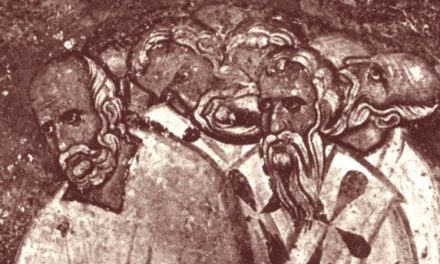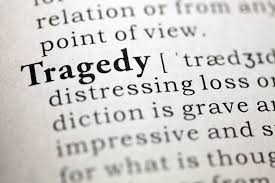This week’s episode is titled “Hermits.”
A few episodes back when I introduced Athanasius, I mentioned the religious hermits he visited in the wilderness near Alexandria in Egypt, bringing them food. As a young man, Athanasius honored these men who’d forsaken the ease of city life to pursue an undistracted but difficult life of devotion to God.
Who were these hermits, and what moved them to such a radical departure from the lifestyle modeled by Jesus and the Apostles?
While the theology of monks & monasteries evolved over many generations, its earliest foundation rested on the example of John the Baptist, the forerunner of Christ who was something of an ascetic. His normal haunt was the Judean wilderness where it intersected the Jordan River. He wore a less than a fashion-conscious wardrobe and ate a strict organic diet grudgingly provided by the wilderness.
The earliest hermits put great weight in Jesus’s counsel to the rich young ruler to sell his possessions, giving it all to the poor, & following the Lord. They embraced the New Testament’s frequent idiom that the flesh is in a battle with the spirit & vice versa. They concluded flesh & spirit are irreconcilable. Hermits literally renounced the world by leaving the cultured life of the city to live in a primitive setting in the wilderness. This lifestyle of deprivation and discomfort was regarded as the truest route to unhindered communion with God by the hermits and a growing number of their admirers.
The first time we see a written expression of this emerging mindset is in the Shepherd of Hermas about AD 140. This early Christian document defines a higher & lower route believers can take in their devotion to God. Faith, hope, & love are the lower route required of all Christians. But for those who aspire to closer intimacy with God, self-denial is required. This denial of the self took many forms with celibacy & renouncing marriage one of the more radical, yet popular.
The practice of penance became common with believers moved to dramatic acts of charity and bravery in order to prove their devotion to God. When persecution was a frequent threat, Christians used penance as a way to compensate for moments of weakness & fear. And of course, the martyrs were luminous heroes even some pagans admired! But with the repeal of persecution, the Church needed new heroes & found them in the hermits who engaged in extreme acts of self-denial.
The earliest monks were hermits; individuals who took refuge in the desert, hinting at where they got their start; in Egypt, where the desert is plentiful outside the fertile strip of land along the Nile. The word or hermit comes from the Greek word for desert.
About AD 250, a 20-year-old named Anthony took Jesus’ command to the rich young ruler to sell his possessions & follow him — literally. Anthony sold everything & went to live in an abandoned tomb. Legends quickly grew up about his battles with temptation that took visible form in attacks by demons, seductive women, & wild beasts. Anthony emerged from each battle with a greater sense of devotion to God that inspired others to follow his ascetic example. Soon, hundreds made their way to the wilderness to pursue a life of rigid self-denial. Anthony was Athanasius’ favorite. Since Anthony lived to be over a hundred, he was alive when the future bishop of Alexandria was taking supplies to the desert monks. Athanasius wrote a biography of Anthony, which became widely popular. This book, more than any other factor helped boost the esteem & appeal of the hermetic life.
Monasticism grew apace with the new-found imperial favor under Constantine and his successors. It’s not difficult understanding why the number of ascetics jumped & monasticism became popular at the same time the Church & State were buddying up. Being a Christian was no longer dangerous, so the sincerity of many new members declined. When people realized belonging to a church was a social & political plus, the sincerity factor dipped even further. Genuine believers noted the sagging quality of faith among so many of the church’s fair-weather friends & chose responded by embracing a more rigorous path. The models of that era were the monks; those standout Christian heroes who’d attained an honor similar to that given the martyrs of the previous era-and hey! I don’t have to get my head chopped off. Cool.
So the monks of this time weren’t so much fleeing the world as they were protesting a worldly church.
Part and parcel of the hermetic life was an isolated individualism that stands in contrast to the communal life modeled by Jesus and the Apostles and urged in the New Testament. You don’t have much of a Body of Christ when it’s just one guy in a cave. Hermits found refuge in the wilderness an easy way to avoid the temptations of the external world but what of the far more dangerous inner temptations of the soul = things like pride & envy?
The temptation to pride is obvious. After all, it was easy for the desert ascetics who’d taken the supposed “higher path” to consider themselves better than others. But how could envy be a problem when they lived alone? Well, they lived alone but they had plenty of visitors. Pilgrims made their way out to meet them and catch a few moments with those considered living saints. As these pilgrims made the rounds of several hermits, they reported to each hermit the extreme acts of penance and piety of the others. Not wanting to be outdone in a show of devotion, hermits endeavored to outdo each other. They went on extreme fasts, ate bizarre foods, lived in trees, on tops of pillars, & refused to bathe. As their acts became more bizarre, their fame grew & soon thousands flocked to see them. One hermit named Simon Stylites was so put out by the crowds who came to see him, he erected a pillar he lived on the top of for 30 years. People sent up food via a rope & basket.
As with any extreme, it didn’t take long before a calmer and more reasoned way challenged the decidedly non-biblical ultra-individualism of the desert hermits. About AD 320, someone remembered Genesis 2:18 à People shouldn’t be alone. Hey, maybe these hermits we’ve made into living saints aren’t really hitting the mark after all.
An ex-soldier named the Pachomius formed the first monastery. It was a place where Christians could pursue devotion to God in a communal setting. Instead of each monk deciding for himself how to live and what to do, drawing on his experience as a soldier, Pachomius set rules for the community. All members wore the same uniform, engaged in similar manual labor, and kept the same schedule.
While Pachomius’ monastery was the first we know of for men, women already had their own version of communal life. This had been necessary since women were not allowed to be hermits. Their isolation would’ve made them a tempting target for criminals and brutes. Nonnus is the feminine form of the word monk so the women who pursued the communal life were called nuns; their cloistered commune was a convent.
The monastic movement spread north out of Egypt into Syria, then West into Asia Minor which at that time was the most spiritually dynamic region of the Faith. Once monasteries took root in Asia Minor they spread rapidly across Europe.
When Athanasius died in the Spring of 373, 3 bishops from Cappadocia in Asia Minor picked up and continued to carry the standard of loyalty to the Nicaean Creed. Basil, Gregory of Nazianzus, and Gregory of Nyssa. These 3 greatly promoted the monastic movement. Basil was especially important as he authored the Rule of Discipline that framed monastic life for generations after and does to this day in the Eastern Orthodox Church.
Throughout the 4th & 5th Centuries, monasticism gained popularity and infiltrated every level of society. The communal life of the monks re-infused the Church with a sense of purpose and a return to the piety that had marked the Church’s early years. Martyrdom was replaced by a whole-hearted devotion to God thru renouncing a career of worldly success in favor of one lived in the imitation of Christ. In order to obtain this ideal within the context of communal life, monks took vows of obedience, poverty, & chastity. These were attempts to limit the battle-line of temptation and sin by renouncing possessions, self-will, & the sexual urge. Monasteries helped put an end to the problems common to the earlier hermits: idleness & eccentricity. They became centers of social renewal & scholarship. By the 6th Century, most church leaders were monks.
One of the most notable monks from this period was Jerome, who lived from about 340 to 420. He began as a hermit in the Syrian wilderness. Despite best intentions, Jerome was plagued by sexual temptation. The only relief he could find was when his mind was preoccupied by an overwhelming intellectual challenge. Someone suggested he learn Hebrew which proved to be an effective prescription against temptation. Once he’d mastered Hebrew, he traveled to Rome where he became the tutor of one of a leading bishops and met a couple brilliant women who under his training became as skilled as he in teaching the Bible.
When Jerome fell out with some other monks at Rome, he moved to a monastery at Bethlehem where he spent the next 22 years translating the Old & New Testaments into Latin.
At first Jerome’s translation was criticized because he used the street-language of his day rather than the more refined classical Latin of antiquity. People considered his Bible vulgar but it didn’t take long before opinions changed & the Latin Vulgate was widely and wildly popular. The Roman Catholic Church used the Latin Vulgate as their official Bible until recent time.
The man who had the most significant impact on monastic life was Benedict of Nursia not far from of Rome. Benedict was educated in the capital but when he was exposed to the extreme asceticism of the hermits, cut short his schooling in favor of a solitary life in a cave 80 miles south. He spent 3 years studying the Scriptures when local monks came for a visit. Impressed with his learning, they asked if he’d be their abbot, a monastery’s leader. He agreed, but when the discipline he required proved too rigorous, they tried to poison him. He fled. Benedict took little more with him than a wisdom born of failure. Instead of chalking up his ouster from the monastery as a sign he wasn’t cut out to lead, he refined his ideas on how to conduct community and began a new monastery at Monte Cassino south of Rome in 529. When Benedict died 13 years later he left behind a pattern for monastic life that became the standard for hundreds of monasteries and helped safeguard European civilization during the intellectual declension of the Middle Ages; something we’ll return in a later episode.
It was at and for the Monte Cassino monastery Benedict wrote his famous “Rule.” The Rule was a brilliant merging of pragmatism and psychology. Benedict had learned how to administrate a commune of believers to enforce necessary discipline without being harsh. He began by taking the basic monastic forms already in place, then installed a system of discipline that weeded out the lazy and insincere. He knew the only way to accomplish the aims of a monastery was by maintaining authority and discipline, but the required obedience had to be such that an ordinary person could give. Benedict failed in his earlier attempt because he’d expected the monks to follow his own level of discipline, which he realized was greater than all but a few could emulate.
Benedict’s Rule established the role of the monastery’s abbot as sole-authority to whom the monks owed unwavering and unquestioned obedience. But this authority couldn’t be arbitrary, so he made the selection of the abbot a choice for the monks themselves. His rule for the abbot was that any major decision must be made after consulting the monks for guidance. He warned that going against their counsel was both unwise and unsafe. He cautioned abbots against an unchecked exercise of power.
In a move that seems prescient, Benedict advocated each monastery become a world unto itself. Work of both a manual & mental nature was seen as crucial to monastic life and central to devotion to God. So each monastery became a self-supporting community, dependent on the outside world for little. What this meant was that as the Roman Empire dissolved, the scholarship of the ancient world was preserved in the Benedictine monasteries where it was read, studied, & copied for generations. They became the storehouses for the knowledge that would reemerge in the Reformation & Renaissance, lifting Europe out of the Middle Ages.
As we end this episode, here are some lines from the Rule of St. Benedict.
- The first degree of humility is prompt obedience.
- Idleness is the enemy of the soul; and therefore the brethren ought to be employed in manual labor at certain times. At others, in devout reading.
- The sleepy like to make excuses.
- The abbot ought ever to bear in mind what he is and what he is called; he ought to know that to whom more is entrusted, from him more is exacted.
- He should know that whoever undertakes the government of souls must prepare himself to account for them.
To both casual listeners and subscribers of CS, thanks for joining us.
If you haven’t done so yet, please drop by the Facebook page and give it a “like.” If you access CS through iTunes, please rate the podcast and leave a review. Thanks.






This one strikes home when compared to the church of today.